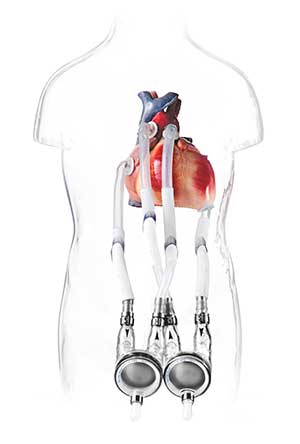ENGINEERINGNET.EU -- From a medical point of view the 14-month-old girl would only have been able to survive a few more weeks without the ventricular assist device. Now the artificial heart has taken over the pumping function of the completely weakened heart.
Until a donor heart is found for the girl, weighing only seven kilograms, her life depends on the mechanical artificial heart.
The little patient would very probably not have survived waiting for transplantation in Japan, or for transport to another country for transplantation without the mechanical support. Assisted by the artificial heart, the infant could be stabilized well enough to be able to wait for transplantation.
The heart – or 'ventricular assist device' - from the German company Berlin Heart has been successfully employed in more than 1,100 children worldwide since its first implantation in 1990. It is the only system which can support all patients from newborns up to young people and adults such that they can survive until the heart transplantation.
The heart is used in 138 centers in 34 countries for bridging the often long waiting periods - in Europe 57.5% of the patients wait longer than one year for a new heart. Occasionally the heart can also recover so well, due to the mechanical support, that the assist device can be explanted and the patient can continue to live with their own heart.
The implantation was performed by Professor Ono and Professor Murakami, with medical advice from Professor Wearden (Children's Hospital of Pittsburgh) and clinical specialists from the Berlin Heart company from Germany and the USA.
At the same time the implantation constitutes the beginning of the approval study for the device in Japan. In Europe, the USA and many countries in South America and Asia, this system is already available to patients.
It was announced from clinical circles that the little patient is doing well after the operation.










